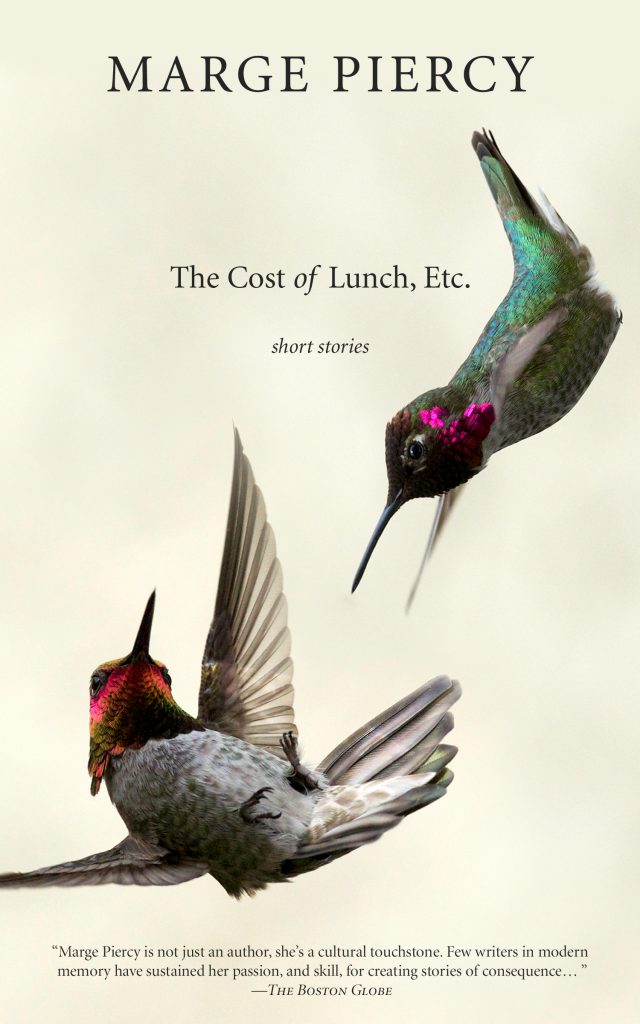By George Longenecker
Rain Taxi
November 2014
In short stories, the reader has only a few pages to identify with the protagonist. This means that effective short stories require strong characters, concise plots, and memorable settings. It also means that it can be difficult for a novelist to make the shift to short fiction. Happily, Marge Piercy has succeeded admirably with the twenty well-crafted tales in The Cost of Lunch, Etc., her first short story collection.
A prolific novelist, poet, and memoirist, Piercy’s books include Woman on the Edge of Time, Gone to Soldiers, and The Hunger Moon. As in poetry, short fiction involves working within a limited space, and Piercy uses the skills she has earned as a poet to craft rich, succinct stories with quirky characters and layered imagery.
Each story in The Cost of Lunch, Etc. has a female protagonist. Some are also partly autobiographical, such as “She’s Dying He Said,” in which Jewish heritage is central to Marah, who survives childhood German measles and rheumatic fever thanks to a hamsa, an upraised hand with an eye in the palm that wards off demons. Marah says she has it to this day:
I said I could not abandon the name my Hannah (grandmother) had given me when everyone said I was dying and had given up on me—except her. I honor her with the Hebrew name of bitterness that she gave me so the angel of death would pass on. . . . I lived and grew up to write about her and many others whose stories would otherwise be lost. (39, 44)
In “Saving Mother from Herself,” Piercy writes of a hoarder, patronized by her children, who think her home is a rat’s warren of trash. With a television crew they descend on her to clean out her prized possessions:
They couldn’t understand how much pleasure I took in saving money and protecting good things that might otherwise end up in the dump. (17) How would you like a bunch of strangers to invade your house, take three-quarters of your possessions away, tell you what you’re supposed to think and feel? (19)
“What Remains” shows Piercy’s mastery of imagery. It’s a poignant tale of loss and redemption. The protagonist takes her dying sister’s “…peacock vase . . . a platter in the shape of a fish, her silverware.” Then, only reluctantly, she also accepts her sister’s cats. Despite her hesitance to take them, the surviving sister ultimately realizes that the cats bring her some solace from her grief: “I think she knew what she was doing when she bequeathed me her cats.” (73)
The book’s paragraphs are concise and poetic. Each sentence is purposeful, enhancing the setting and action. If Piercy’s characters make you weep, it’s because they’re so real. Having now written in every genre, she has shown that she is as capable with the short story as she is with novels and poetry.






